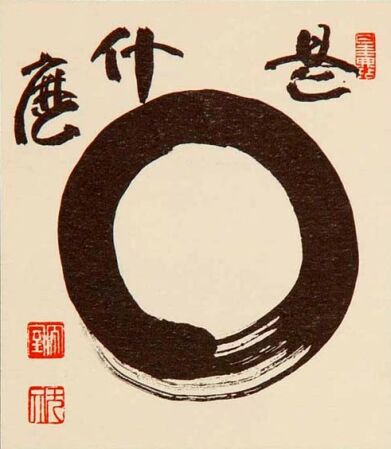
| ... |

|
| ... |

|

|
|
This sumi-e (Japanese word for "black ink painting")
circle, is derived from the Sanskrit word "sunyata". It means
"emptiness" or "nothingness" in
Zen
Buddhism.
It was created by Zen master and calligrapher Yamada Mumon Roshi. |
| Communication Promise | E-Mail | Home |
| © Laurence Platt - 2003 through 2024 | Permission |